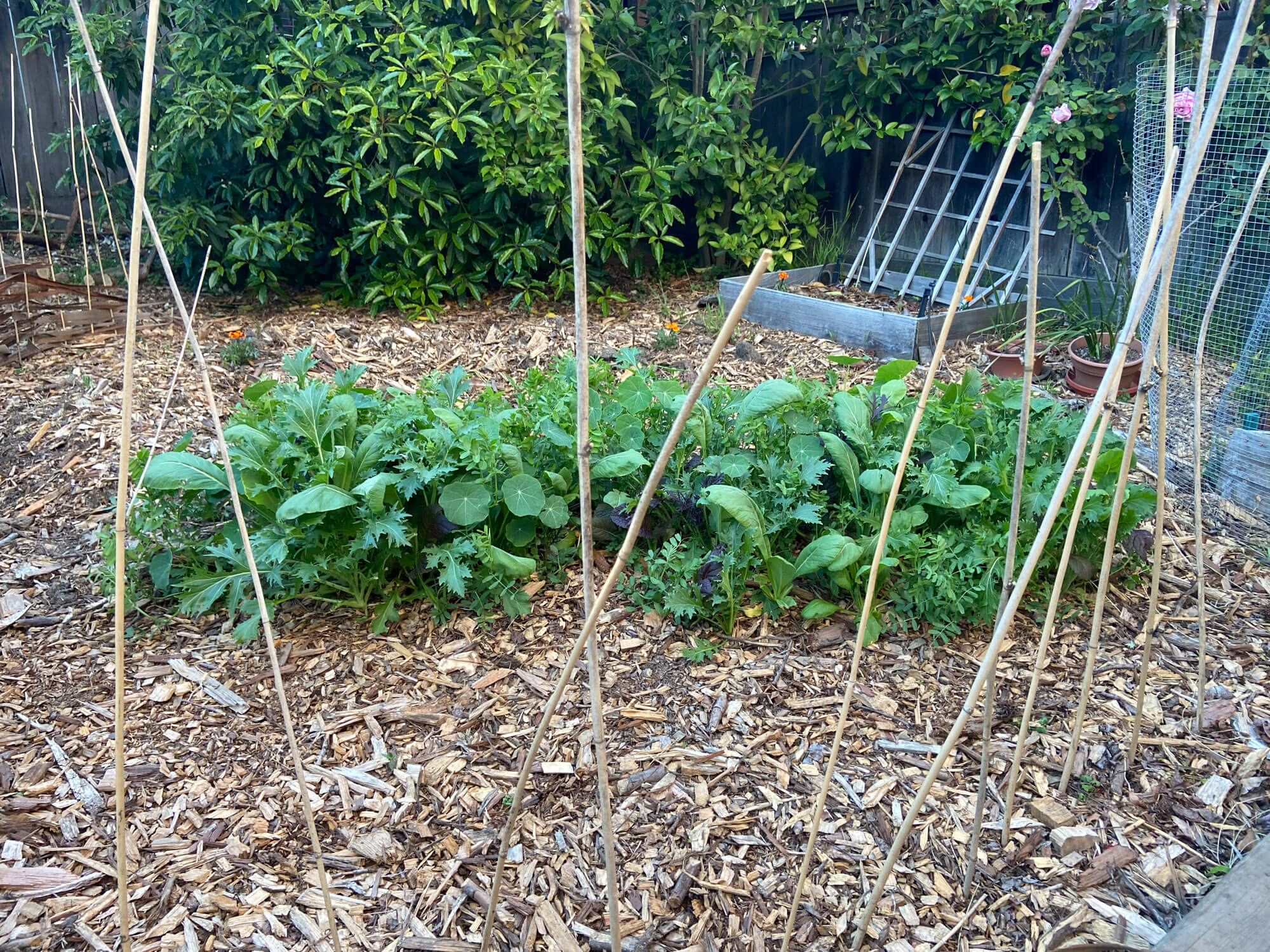Earthworks facilitate passive irrigation
Earthworks are strategically designed ways of shaping the earth to slow the flow of storm water.
The vast majority of our rainwater runs off into streams and sewers, carrying chemicals, fertilizers, and sediment. Three quarts of healthy soil can easily hold one quart of water. Instead of investing in rain barrels and their accoutrements, why not use your own soil as a living sponge?
This year, I’m being mischievous in the garden. All that weeding, mowing, pruning, and ploughing can be a lot of work, so I’ve made an experiment of asking, “what can I get away with not doing?” In February, when I sowed common vetch and nasturtium with the Must Have Mustards Baby Greens Seed mix by Botanical Interests, I scattered seeds haphazardly over mulch, hose-watered for about a minute, and walked away. I didn’t remember to water again until a couple of days later, at which point the mustard tendergreens had already sprouted. As an inexperienced grower who has never had a modicum of luck with seeds, I was amazed to see first the five types of mustard, then the vetch, then the nasturtium grow happily in a garden bed I had spent next to no time caring for. More compelling still was that vetch (which I had scattered elsewhere in the garden and watered just as frequently) was not sprouting anywhere except this new garden bed. I suspect that my nitrogen-fixing cover crop thrived in this spot alone because I had engineered my garden bed as part of a very simple earthworks system.
In California, landscapes incorporating earthworks make the most of occasional, heavy rains to replenish groundwater reservoirs rather than allowing valuable moisture to run off into streams and sewers. Earthworks consist of thoughtfully placed basins, drains, and walls, all built out of soil. A swale, used to catch rainwater and runoff, is a depression or trench that holds water while the soil absorbs it. This infrastructure is especially useful to gardeners in the East Bay, where our clay soils, resisting vertical absorption, tend to drain more laterally. Raised mounds of soil, called berms, can be used to direct water into swales. Together, berms and swales create terraces that facilitate passive irrigation, discourage erosion, and look fantastic. These two terraforms also complement each other by allowing lazy gardeners to kill two birds with one stone.
Dig an on-contour trench and pile up the excavated dirt directly downhill and parallel to your swale. Break up the clods, tamp down the top of the pile, and cut a spillway through the bed to accommodate any overflow (maybe into a second swale?). Voila! You’ve built a berm and swale. Some permaculturists like to plant their swales with aquatic plants and use their berms as raised paths. I opted to do the opposite, filling the swale with a cedar chip mulch and planting the berm. The roots of my mustards, vetch, and nasturtium are able to reach water stored in and around the swale. Rain that fell in other areas where I’d sowed vetch was not able to percolate as deeply, and were therefore subject to more surface evaporation. Can you get away with scattering seeds over woodchips and watering twice in early spring? Yes, but only with the help of earthworks.
–Schuster


